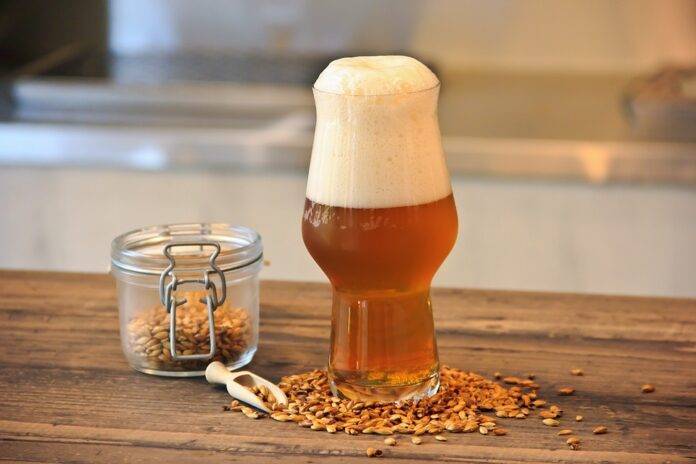Introduction
Belgian and German beers are renowned for their diverse flavors, aromas, and brewing techniques. These beers are not only enjoyed on their own but also paired exceptionally well with a wide range of foods, from rich and hearty dishes to delicate and nuanced flavors. In this report, we will explore why Belgian and German beers are excellent choices for pairing with both rich and delicate foods, and how their unique characteristics complement various culinary experiences.
Why Belgian Beers Pair Well with Rich Foods
Complex Flavor Profiles
Belgian beers are known for their complex flavor profiles, which often include notes of fruit, spice, caramel, and even a hint of funk from wild yeast strains. These bold and diverse flavors can stand up to rich and flavorful dishes, such as stews, braised meats, and creamy sauces. The malt-forward nature of many Belgian beers also provides a sweet and malty backbone that can balance out the richness of dishes like beef bourguignon or coq au vin.
High Alcohol Content
Many Belgian beers have a higher alcohol content compared to beers from other regions, which can help cut through the richness of fatty or heavy foods. The warmth and depth provided by the alcohol in Belgian beers can enhance the dining experience and provide a satisfying contrast to dishes like roasted duck, foie gras, or aged cheeses.
Bottle Conditioning and Carbonation
Belgian beers are often bottle-conditioned, meaning that they undergo a secondary fermentation in the bottle. This process creates a natural effervescence and carbonation that can help cleanse the palate between bites of rich and decadent foods. The bubbles in Belgian beers can also help cut through the heaviness of dishes like pâté, sausages, and charcuterie, refreshing the palate and enhancing the overall dining experience.
Why German Beers Pair Well with Delicate Foods
Clean and Crisp Flavor Profiles
German beers, particularly lagers and pilsners, are known for their clean, crisp, and refreshing flavor profiles. These beers often have subtle hop bitterness, a light malt sweetness, and a dry finish that can complement delicate and nuanced dishes, such as seafood, salads, and light pastas. The balanced and restrained flavors of German beers allow them to enhance, rather than overpower, the flavors of delicate foods.
Effervescence and Refreshing Qualities
German beers are typically well-carbonated and effervescent, which can help cleanse the palate and refresh the taste buds when paired with delicate foods. The bubbly nature of German beers can provide a contrast to dishes like sushi, oysters, or grilled vegetables, cutting through any richness or heaviness and leaving a clean and crisp finish on the palate.
Tradition and Craftsmanship
German beers have a long tradition of brewing excellence and craftsmanship, with strict adherence to brewing techniques and quality standards. This attention to detail and precision in brewing results in beers that are well-balanced, nuanced, and versatile when it comes to food pairings. The subtle complexities and layers of flavor in German beers can elevate the dining experience and enhance the flavors of delicate and refined dishes.
Industry Insights and Trends
The Belgian and German beer industries have seen steady growth in recent years, with an increasing demand for craft and specialty beers in international markets. Belgian breweries like Duvel Moortgat and Chimay have expanded their presence globally, capitalizing on the popularity of Belgian beer styles such as saisons, tripels, and sours.
In Germany, breweries like Weihenstephaner and Paulaner continue to uphold the country’s brewing traditions and produce world-class lagers, wheat beers, and bocks. The German beer market remains strong, with a focus on quality, tradition, and innovation driving growth and diversity in beer styles.
Financial Data and Market Performance
According to industry reports, the Belgian beer market is valued at over $10 billion, with exports accounting for a significant portion of revenue. German beer exports have also seen steady growth, reaching over $1 billion in value, as consumers around the world seek out authentic and high-quality beer experiences.
Craft breweries in both Belgium and Germany have gained traction in the market, offering unique and innovative beer styles that appeal to a wide range of consumers. The rise of craft beer culture has brought about a renaissance in traditional brewing techniques and flavors, with Belgian and German breweries at the forefront of this movement.
Conclusion
Belgian and German beers are versatile and dynamic beverages that can enhance a wide range of culinary experiences, from rich and hearty dishes to delicate and refined flavors. The complex flavor profiles, high alcohol content, bottle conditioning, and carbonation of Belgian beers make them ideal for pairing with rich and flavorful foods, while the clean and crisp flavor profiles, effervescence, and tradition of German beers make them perfect companions for delicate and nuanced dishes.
By understanding the unique characteristics of Belgian and German beers, consumers can elevate their dining experiences and explore the endless possibilities of beer and food pairings. Whether enjoying a hearty Belgian ale with a savory beef stew or savoring a delicate German lager with fresh seafood, the world of beer and food pairing offers a rich tapestry of flavors, aromas, and textures to discover and enjoy.




